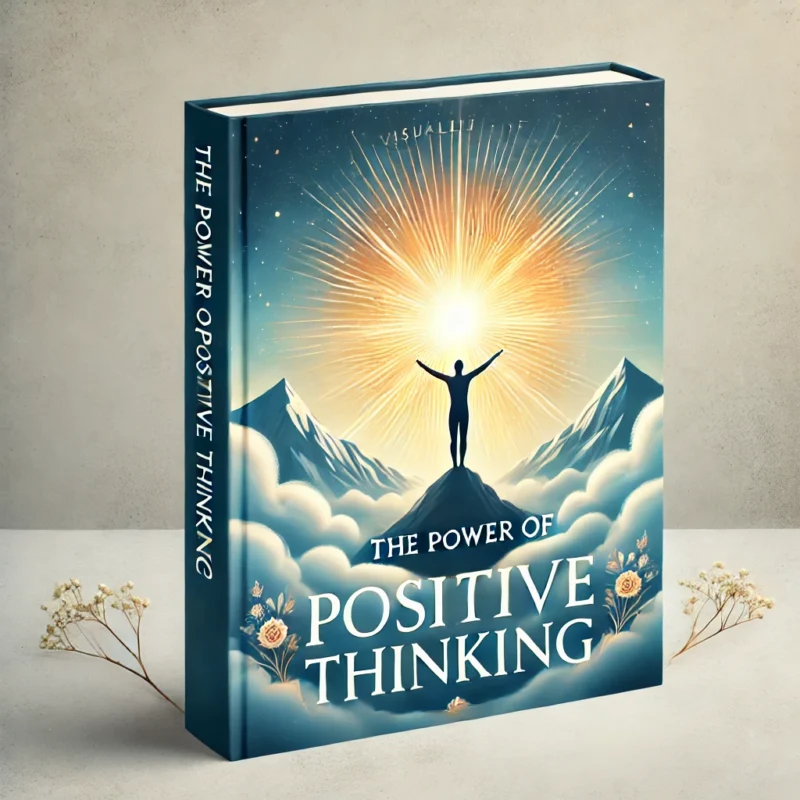Introduction to Meditation
In our modern, fast-paced world, where stress and hectic pace are part of everyday life, more and more people are looking for ways to find inner peace and balance. Meditation is a millennia-old practice that allows you to do just that. But why is meditation so important in today’s world? The answer lies in its ability to help us calm the constant stream of thoughts, reduce stress and improve our concentration. Numerous scientific studies have proven the positive effects of meditation on mental and physical health, from reducing anxiety to improving sleep.
In this blog post, we want to give you a basic introduction to the world of meditation. We’ll explore the history and different types of meditation, highlight the benefits and give you practical tips on how to get started. Our aim is to encourage you to try meditation for yourself and experience the positive changes it can bring to your life. Whether you are looking for a way to slow down your everyday life or gain deeper spiritual insights, meditation can be a valuable companion on your path to greater serenity and inner peace.
What is Meditation?
Definition: Basic explanation of what meditation is
Meditation is a practice that aims to calm the mind and achieve a state of deep concentration and relaxation. This is done through various techniques such as breathing exercises, repetitive mantras or mindful observation of thoughts and feelings. Essentially, meditation is a method of focusing attention and sharpening awareness.
Aim and purpose: Why people meditate – stress reduction, inner peace, self-discovery
People meditate for various reasons. One of the main reasons is to reduce stress. Through regular meditation, we can learn to deal with stress better and manage it more effectively. Another aim of meditation is to achieve inner peace. In a hectic world, meditation helps to find a moment of stillness and clear the mind. Meditation also helps us to find ourselves. It enables us to gain deeper insights into our own being, understand our thoughts and emotions better and establish a stronger connection with ourselves.
Misunderstandings: Clarifying common misconceptions
There are many misconceptions about meditation. A common misconception is that meditation is only for spiritual people. In fact, anyone can benefit from meditation, regardless of religious or spiritual background. Another misconception is that meditation is about not thinking about anything. In reality, it is about observing thoughts without getting lost in them. Some also believe that you need a lot of time to meditate, but just a few minutes a day can make a big difference.
Meditation is a versatile and accessible practice that can help anyone lead a more balanced and conscious life.
Different types of Meditation
Mindfulness meditation (Mindfulness): Focus on the present moment
Mindfulness meditation, also known as mindfulness, focuses on staying in the present moment. Here, attention is consciously directed to the breath, body sensations or sounds without judging them. The aim is to become aware of your own thoughts and feelings, but not to judge or analyze them. This form of meditation helps to develop a deeper connection to the here and now, which often leads to a reduction in stress and an increase in general well-being.
Transcendental Meditation: using mantras to achieve a calm state
Transcendental Meditation (TM) is a simple but effective technique in which a specific mantra is repeated to calm the mind and enter a state of deep calm and relaxation. The mantra, a word or phrase with no specific meaning, is repeated quietly in the mind. The aim of this meditation is to transcend thinking and enter a state of pure awareness. Regular practice can lead to profound mental and physical benefits, including the reduction of stress and anxiety.
Zen meditation: sitting meditation and breath control, often in Buddhist practice
Zen meditation, also known as zazen, is a central practice in Zen Buddhism. It involves sitting in a particular posture, often on a cushion (zafu), and focusing on breathing. The aim is to clear the mind and deepen your presence in the present moment. By concentrating on the breath, the mind is calmed and mindfulness is strengthened. Zen meditation places great value on discipline and regularity in order to achieve inner peace and insight in the long term.
Loving-kindness meditation: developing compassion and love for yourself and others
Loving-kindness meditation, also known as metta, is a practice that aims to develop unconditional love and compassion for yourself and others. This meditation often begins with a focus on oneself, repeating positive and loving wishes such as “May I be happy” or “May I be healthy”. Gradually you extend these wishes to other people, from loved ones to neutral and even difficult individuals. The aim of this meditation is to open the heart and strengthen the capacity for compassion and empathy, which can lead to a deep sense of connection and inner contentment.
By understanding and practicing these different types of meditation, we can learn to calm our minds, reduce stress and develop a deeper sense of peace and well-being.
The Benefits of Meditation
Physical benefits: Reducing stress, improving sleep quality, lowering blood pressure
Meditation has numerous physical benefits that have been proven by scientific studies. One of the most important is the reduction of stress. Regular meditation practice puts the body into a state of deep relaxation, which lowers the production of stress hormones such as cortisol. This leads to a general calming of the nervous system. Meditation also improves the quality of sleep. People who meditate regularly report deeper and more restful sleep, as meditation helps to calm the mind and stop the carousel of thoughts before falling asleep. Another physical benefit is the lowering of blood pressure. Meditation promotes relaxation of the blood vessels and can therefore naturally lower blood pressure, which reduces the risk of cardiovascular disease.
Mental benefits: Improving concentration, reducing anxiety and depression, promoting general well-being
In addition to the physical benefits, meditation also offers numerous mental benefits. Through the practice of mindfulness and focus, the ability to concentrate is strengthened. Regular meditation trains the brain to concentrate better and longer on a task. Meditation can also help to reduce anxiety and depression. Studies have shown that meditation alters activity in areas of the brain associated with stress and anxiety, which can lead to a significant improvement in mood. In addition, meditation promotes overall well-being by creating a sense of inner calm and contentment. This contributes to a positive attitude and a higher quality of life.
Emotional benefits: Increased self-awareness, better emotional regulation, more compassion and empathy
Emotional benefits are another important aspect of meditation. Through the practice of mindfulness, you develop increased self-awareness, which means that you become more aware of your thoughts, feelings and behaviors. This allows for better emotional regulation as you learn to recognize emotions as they arise and deal with them consciously rather than reacting impulsively. Meditation also promotes compassion and empathy. Techniques such as loving-kindness meditation help to cultivate positive feelings towards oneself and others. This strengthens the ability to be compassionate and empathetic, which in turn improves relationships with others and creates a deeper sense of connection.
Overall, meditation offers a variety of benefits that affect the body as well as the mind and emotions. Through regular practice, we can lead healthier, happier and more fulfilling lives.
First steps towards Meditation
Preparation: find a quiet place, wear comfortable clothes
The first step to meditation is the right preparation. Find a quiet place where you will be undisturbed. It doesn’t have to be a special meditation room; a quiet room or corner will do. Make sure that the surroundings are pleasant and do not distract you. Wear comfortable, non-restrictive clothing so that you can concentrate fully on your meditation. It can also be helpful to have a blanket or cushion ready to ensure a comfortable sitting position.
Basic technique: simple breathing meditation for beginners
Breathing meditation is particularly suitable for beginners as it is easy to learn and effective. Sit in a comfortable position – either on a chair with your feet firmly on the floor or cross-legged on the floor. Keep your back straight but relaxed. Close your eyes and focus your attention on your breath. Breathe in deeply through your nose and feel the air flowing into your body. Breathe out slowly through your mouth or nose and concentrate on the feeling of the breath leaving your body. If your thoughts wander, gently bring your attention back to your breath.
Frequency and duration: Recommendations for beginners (e.g. 5-10 minutes per day)
As a beginner, it is important to start small. Set yourself a realistic goal, for example 5-10 minutes of meditation per day. The short duration helps to establish a regular practice without it feeling overwhelming. You can gradually increase the duration as you feel more comfortable and notice the benefits of meditation. A daily routine, even if it is short, can contribute significantly to developing a sustainable meditation practice.
Expectations and patience: setting realistic expectations and being patient with yourself
Meditation is a practice that requires time and patience. Set yourself realistic expectations and don’t expect immediate results. It is normal for the mind to be restless at first and for many thoughts to arise. Be patient with yourself and realize that it is a learning process. Every day will be different, and that’s okay. The key is to practice regularly and trust that the positive effects will come with time. It’s important not to view meditation as a performance, but as a valuable time of self-care and inner peace.
By taking these first steps, you can build a solid foundation for your meditation practice and begin to experience the many benefits that meditation brings.
Common challenges and how to overcome them
Distractions: Strategies for minimizing distractions
One of the biggest challenges when meditating is distractions. Noise, thoughts and external influences can make it difficult to concentrate. To minimize distractions, choose a quiet place for your meditation. Inform family members or roommates that you do not want to be disturbed. If necessary, use earplugs or soothing background music. Another effective approach is to set clear intentions at the beginning of your meditation. By consciously deciding to focus your attention inwards, you create a mental barrier against distractions. When thoughts arise, notice them and let them pass without pursuing them further.
Restlessness: tips for dealing with physical and mental restlessness
Physical and mental restlessness are common obstacles to meditation. Physical restlessness can be alleviated by sitting in a comfortable position and using cushions or blankets to support the body. Stretching or gentle movement before meditation can also help to relieve physical tension. Mental restlessness is often more difficult to deal with. It is normal for the mind to wander and for many thoughts to arise. Try not to judge or fight these thoughts. Instead, you can gently bring your attention back to your breath or a meditation object. Regular practice will help you to find more inner peace over time.
Keep at it: Motivational techniques to meditate regularly
Maintaining a regular meditation practice can be challenging, especially when initial enthusiasm wanes. One way to stay motivated is to set realistic and achievable goals. Start with short sessions and gradually increase the duration. A fixed time of day for meditation can also help to make it a habit. It can also be useful to join a meditation group or find a meditation partner to support each other. Keeping a meditation journal in which you record your experiences and progress can also have a motivating effect. Finally, regularly remind yourself of the positive effects meditation has on your wellbeing and remind yourself that every step along the way is valuable.
By applying these strategies, you can overcome common meditation challenges and develop a consistent, rewarding meditation practice.
Conclusion
In this blog post, we have explored the basics of meditation and highlighted its importance in today’s hectic world. We have defined what meditation is, introduced the different types of meditation and described the numerous physical, mental and emotional benefits. We have also provided practical tips on how to get started with meditation and strategies for overcoming common challenges.
Encouragement: Encouraging readers to start meditating and have their own experiences
Meditation offers a multitude of benefits that can positively change your life. Regardless of your previous experience or background, meditation is an accessible practice that anyone can learn. Start with small steps and be patient with yourself. The journey of meditation is unique to each individual, and through regular practice you will see how it can improve your wellbeing and quality of life. Don’t hesitate to take the first steps and gain your own experience.
Further resources: Links to further articles, books, apps or meditation courses
To further support your meditation journey, here are some helpful resources:
Books:
“The Artist’s Path” by Julia Cameron
‘Meditation for beginners’ by Jack Kornfield
“Mindfulness: Practicing presence for a fulfilling life” by Jon Kabat-Zinn
Apps:
Headspace (introductions and guided meditations)
Calm (various meditation programs and sleep stories)
Insight Timer (guided meditations and meditation music)
Online courses:
“Mindfulness-Based Stress Reduction (MBSR)” by Jon Kabat-Zinn
“The Science of Well-Being” by Yale University (free course on Coursera)
“10% Happier” (online courses and coaching)
These resources offer valuable support and inspiration to deepen and develop your meditation practice. Good luck on your path to more serenity and inner peace!








